The Samsung Galaxy S7 & S7 Edge Review, Part 1
by Joshua Ho on March 8, 2016 9:00 AM ESTGPU Performance
On the GPU side of things, Qualcomm's Snapdragon 820 is equipped with the Adreno 530 clocked at 624 MHz. In order to see how it performs, we ran it through our standard 2015 suite. In the future, we should be able to discuss how the Galaxy S7 performs in the context of our new benchmark suite as we test more devices on our new suite to determine relative performance.
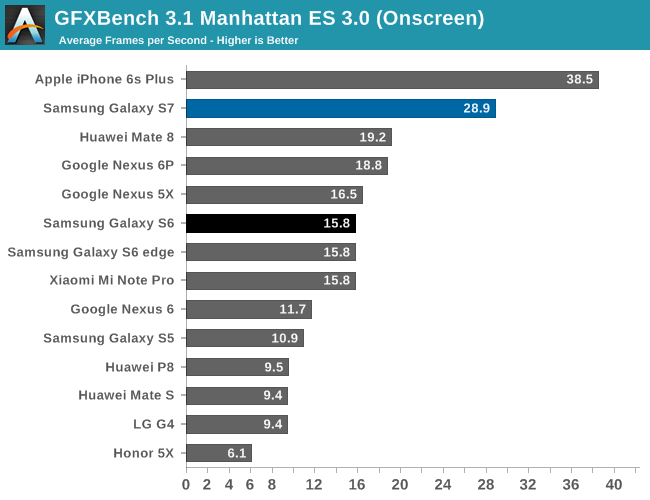

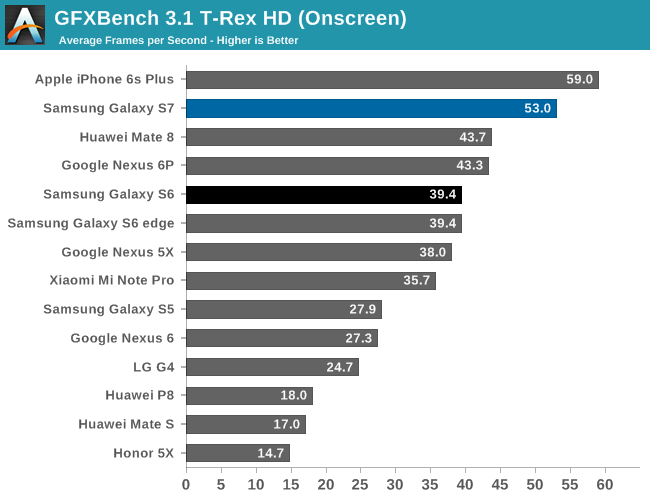
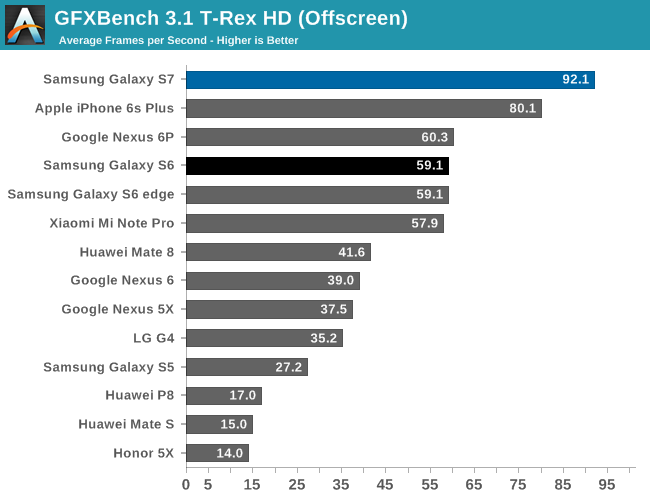
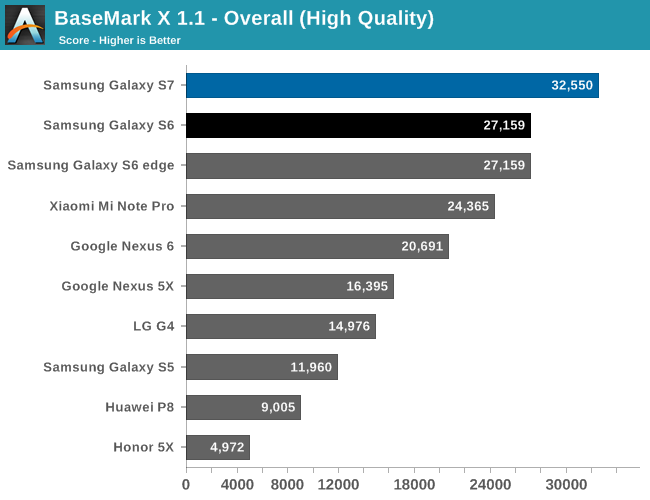

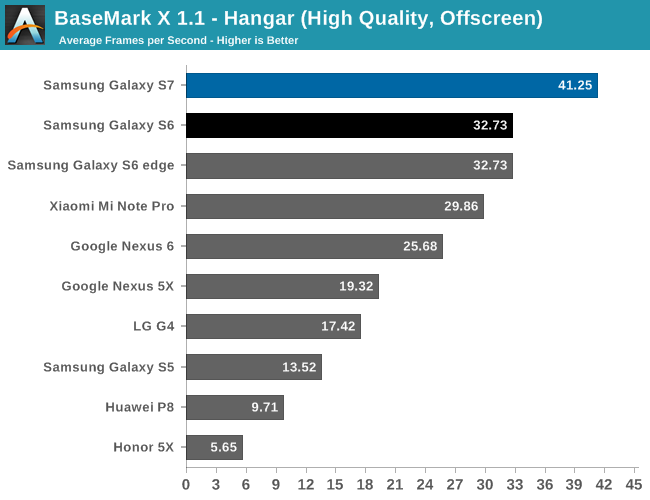
At a high level, GPU performance appears to be mostly unchanged when comparing the Galaxy S7 to the Snapdragon 820 MDP. Performance in general is quite favorable assuming that the render resolution doesn't exceed 2560x1440.
Overall, the Adreno 530 is clearly one of the best GPUs you can get in a mobile device today. The Kirin 950's GPU really falls short in comparison. One could argue that turbo frequencies in a GPU don't make a lot of sense, but given that mobile gaming workloads can be quite bursty in nature and that gaming sessions tend to be quite short I would argue that having a GPU that can achieve significant levels of overdrive performance makes a lot of sense. The A9 is comparable if you consider the resolution of iOS devices, but when looking at the off-screen results the Adreno 530 pulls away. Of course, the real question now is how the Adreno 530 compares to the Exynos 8890's GPU in the international Galaxy S7, but that's a question that will have to be left for another day.










202 Comments
View All Comments
TheinsanegamerN - Wednesday, March 9, 2016 - link
It will let us know if throttling is a big issue. Benchmarks are just that, tests to see how well the phone does.Of course we dont run benches all day, but if you do not run benches, then how do you know how well the phone does when pushed, in say, a mobile game like asphalt 8 for more than 5 minutes? It's useful information to have.
tuxRoller - Saturday, March 12, 2016 - link
Well then, according to that measure, throttling is a big issue with the iPhone 6s.How do you tell how well it works with asphalt 8? I'd probably pay asphalt 8 for awhile.
These benchmarks aren't a good proxy as they are designed to push the devices to their limits.
tuxRoller - Tuesday, March 8, 2016 - link
Also, XDA ran some graphics tests continuously if you're interested.All of the phones throttled, save the note 5.
frenchy_2001 - Tuesday, March 8, 2016 - link
here is the xda article:http://www.xda-developers.com/s7-edge-throttling-t...
Note that the note5 did not throttle in GPU test, but its final run was still only 60% of the throttled S7 score (and about 50% of the starting score).
tuxRoller - Tuesday, March 8, 2016 - link
I just mentioned that it didn't throttle since jjj seems to be an exynos fan, so I was trying to forestall "BUT THE EXYNOS DIDN'T THROTTLE", even though it had lower results throughout.gijames1225 - Tuesday, March 8, 2016 - link
Great write up. Glad to see the Snapdragon 820 is properly flagship level. I look forward to the rest of the review, details on throttling, and hopefully at some point a look at Samsungs new Exynos SoC in the other s7 model.Drumsticks - Tuesday, March 8, 2016 - link
It's kind of interesting that Apple has a solid win in CU performance against Qualcomm, but a loss in GPU, even though they get their GPU from a company who should specialize in them. Twister truly is an astounding architecture, but they're probably at the end of the easy, huge performance boosts. It may be interesting to see how well Apple can go about completely redesigning their core when it happens.name99 - Tuesday, March 8, 2016 - link
Faster GPU is not as interesting as faster CPU because it's trivial to make a faster GPU --- just throw more GPU "cores" at the problem. If Apple wanted to double the GPU performance of the A9 tomorrow, all they have to do is use 12 GT7000 cores instead of their current 6.So the decision as to how many to use is an economic/use case decision, not a technical one. Given the pixels Apple is interested in driving, it looks like they used the right number of cores. QC sells into a broader market (and, in particular, a market that, whether or not it makes sense, uses crazy-high pixel densities) so their incentives align with throwing in more cores.
If you want to run a technically interesting GPU performance competition between Apple and Adreno (or Mali, or anyone else), raw performance is not the interesting metric. The interesting metrics are
- performance/watt
- performance/mm^2
I don't know who would win either of these, but my guess is Apple. We don't yet have enough information to answer the first question, but the mutterings about GPU throttling in the comments suggest that QC gets hig GPU numbers by burning lotsa power, not by having some super-advanced GPU that's a cleverer design than anyone else. In a sense, what you're seeing is what Apple could copy if they wanted by putting the A9X inside the iPhone6S.
lilmoe - Tuesday, March 8, 2016 - link
" The interesting metrics are- performance/watt
- performance/mm^2"
Nah, the really interesting metric would be how much power consumes to run (and sustain) the average game at 60FPS at the same resolution. Read: efficiency.
sor - Tuesday, March 8, 2016 - link
Efficiency... So performance/watt.